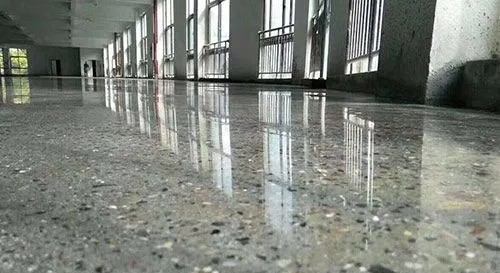
Understanding the Differences between Polishing and Grinding
1. The difference between polishing and grinding
Polishing and grinding are two different surface treatment processes, each with its own unique methods and effects. The difference between these two techniques is their expected results and the procedures involved.
Polishing is mainly used to improve the smoothness and brightness of the surface. The process typically begins with applying polish to the surface, then uses a high-speed rotating machine and polishing pad to achieve the desired smoothness. It is commonly used to process metals, plastics, glass, and other similar materials with the ultimate goal of creating a smooth and shiny surface.
On the other hand, the purpose of grinding is to remove surface roughness and burrs. The technique involves using an abrasive like sandpaper or abrasive powder to rub the surface, thereby smoothing out imperfections and achieving a smoother texture. Grinding is often used to machine wood products, stone, and other materials that require surface refinement.
In summary, polishing focuses on improving surface smoothness and brightness, while grinding is specifically aimed at eliminating surface roughness and burrs. Understanding the differences between these two surface treatment methods is critical to ensuring each technique is applied appropriately based on the material being treated and the desired results. By mastering the unique properties and results of polishing and grinding, individuals and industries can optimize their surface preparation processes for superior results.
Polishing is a key process for surface treatment and is widely used in a range of products such as metals, plastics, ceramics, and glass materials. From car and motorcycle parts to electronic devices like phones and televisions, there's no doubt that polishing is needed to improve the smoothness and brightness of these items. Additionally, in the lighting industry, lamps and decorative lighting fixtures are meticulously polished to achieve the desired shine and shine. This approach is essential to ensure that the final product presents a flawless finish, enhancing its visual appeal and functionality.
Instead, grinding receives attention when working with materials such as wood, stone, and concrete. In the field of home decoration, floors, cabinets, doors, and other surfaces undergo complex polishing processes to achieve a delicate and smooth effect. By effectively removing imperfections and rough textures, grinding ensures these materials meet the high standards required by homeowners and developers alike, thereby enhancing the aesthetic and functional value of the spaces they inhabit.
The ubiquity of polishing and grinding speaks volumes about their irreplaceable role in maintaining quality standards and enhancing the visual and tactile appeal of a variety of products and materials. As these surface treatment methods continue to evolve, their importance will only grow, cementing their place as indispensable tools in numerous industries. The widespread use of polishing and grinding demonstrates their indispensable role in various fields, underscoring the key contribution of these technologies in shaping the fields of manufacturing, architecture, and design.
2. Frequently asked questions about polishing and sanding
Over-polishing and over-sanding: One of the main challenges in these processes is the risk of over-polishing or over-sanding the surface, which can lead to poor surface morphology. Overworking the material can result in irregularities, excessive material removal, and an unsatisfactory final appearance. This question highlights the importance of precision and control when performing polishing and sanding tasks.
Uncleaned surfaces: If the surface is not thoroughly cleaned before polishing and sanding, the results of the polishing and sanding may be compromised. Remaining dirt, debris, or contaminants on the surface can prevent polishing or sanding from being performed correctly, resulting in poor results and potential damage to the equipment being used.
Equipment and Tool Selection: An often overlooked aspect of the polishing and sanding process is choosing the right equipment and tools. Choosing the wrong type of abrasive, grinding disc, or grinding tool for a specific material can negatively impact the final result. Equipment must be matched to materials to achieve the desired finish while avoiding unnecessary damage or inefficiency.
Health Hazards: In addition to technical challenges, the polishing and grinding process presents significant health concerns. The toxic gases and dust produced during these activities pose risks to the respiratory system and the overall health of those involved. Prolonged exposure to these air pollutants can cause respiratory problems and other health complications, requiring adequate ventilation and personal protective equipment.
In short, polishing and grinding are two surface treatment methods, and their processes and effects are different. When performing surface treatment, it is necessary to select appropriate treatment methods
-
Online service
-
Official wechat
account
-
QQ:40933769
-
E-mail:
sales@z-lion.com
Online service
Please feel free to give your inquiry in the form below. We will reply you in 24 hours.


